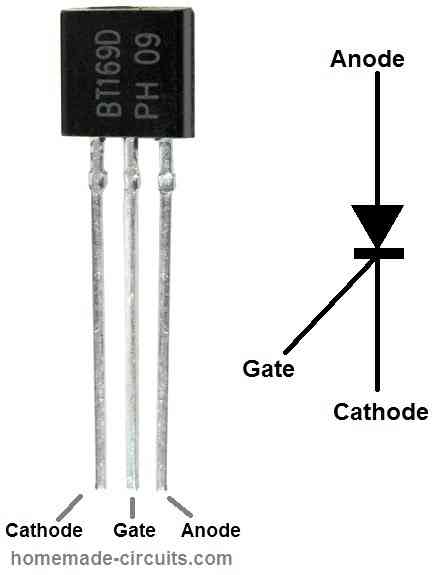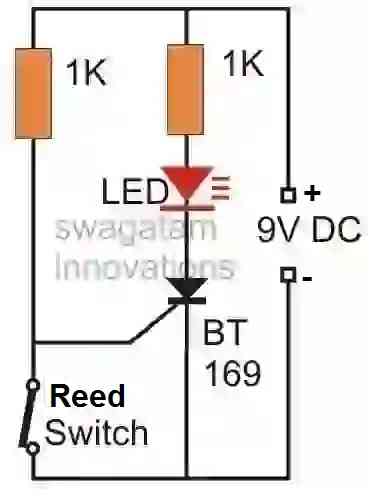The BT169 is a thyristor or SCR (Silicon Controlled Rectifier) that is commonly used for switching applications in low-power electronic circuits. It can be used for small signal, low current applications. Its size is very small just like a BJT. Here are the full technical specifications of the BT169:
Electrical Specifications
- Maximum repetitive peak off-state voltage (VDRM): 400V
- Maximum RMS voltage (VRMS): 240V
- Maximum DC blocking voltage (VDC): 400V
- Maximum average forward current (IF(AV)): 0.5A
- Peak non-repetitive surge current (ITSM): 2.5A
- Peak repetitive forward and reverse blocking current (IDRM): 5μA
- Gate trigger voltage (VGT): 0.8V
- Gate trigger current (IGT): 0.2mA
- Holding current (IH): 0.1mA
- Maximum junction temperature (Tj): 125°C
- Maximum storage temperature (Tstg): -40 to 150°C
- Package type: TO-92
- Maximum forward voltage drop (VF): 1.5V
- Maximum reverse leakage current (IR): 10μA
- Gate trigger voltage range: 0.8V to 2.5V
- Maximum gate voltage (VGTM): 5V
- Maximum on-state voltage (VTM): 1.7V
- Maximum turn-off time (tq): 20μs
- Maximum gate non-trigger voltage (VG): 0.5V
- Maximum gate non-trigger current (IG): 0.05μA
- Maximum reverse recovery time (trr): N/A (not applicable as this is an SCR)
- Thermal resistance, junction to ambient (RthJA): 200°C/W
Pinout:
The BT169 SCR comes in a TO-92 package with three leads. The pinout is as follows:


- Cathode (K)
- Gate (G)
- Anode (A)
Applications
The BT169 SCR can be used in a variety of low-power electronic circuits for switching and control applications. Some common applications of the BT169 include:
- Lamp dimming control: The BT169 can be used in lamp dimmer circuits to control the brightness of incandescent bulbs.
- Motor control: The BT169 can be used to switch on and off small DC motors in electronic control circuits.
- Power supply circuits: The BT169 can be used in voltage regulator circuits to control the output voltage.
- Thyristor control circuits: The BT169 can be used in combination with other thyristors to control the flow of current in power electronics applications.
- Solenoid and relay control: The BT169 can be used to control the operation of solenoids and relays in electronic circuits.
Making a "Door was Opened" Indicator using BT169 SCR
A simple magnetic "door was opened" indicator circuit can be made using a BT169 SCR, a reed switch, a magnet and a few resistors.

Connect the reed switch between the gate and cathode of the reed relay.
Connect a resistor between gate and the positive supply of the circuit.
Connect an LED with a series 1K resistor between the anode and the positive supply of the circuit.
Connect a 9V battery to power the circuit.
Attach the circuit at the edge of the door, and attach a magnet at the frame of the door such that the reed switch and the magnet line up close to each other.
Once the circuit is installed the magnet will keep the reed switch closed, which will ground the SCR gate keeping it switched OFF.
Press the reset button to ensure that the LED is switched OFF while the door is in the closed condition.
This reset button is not shown in the diagram. It is a push-to-ON switch which can be attached across the anode and cathode terminals of the SCR.
Now, as soon as somebody opens the door, the reed switch opens removing the ground supply from the SCR gate.
This causes the voltage to flow to the gate and trigger it ON.
The SCR latches ON switching ON the LED.
Due to its latching property the SCR remains latched ON keeping the LED illuminated even if the door is closed back.
Need Help? Please Leave a Comment! We value your input—Kindly keep it relevant to the above topic!